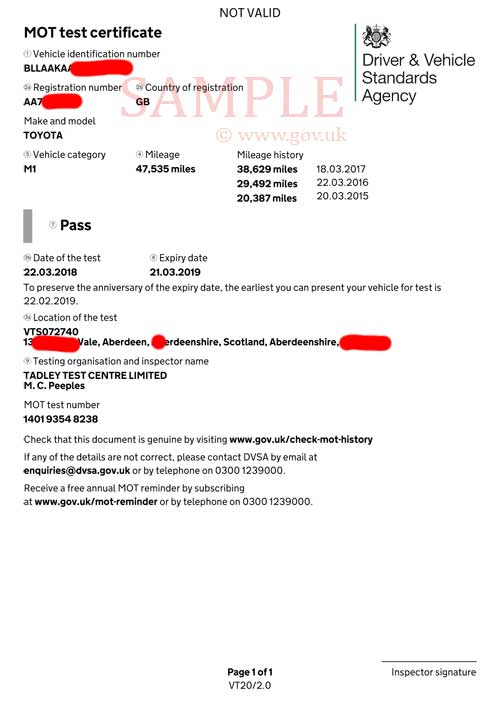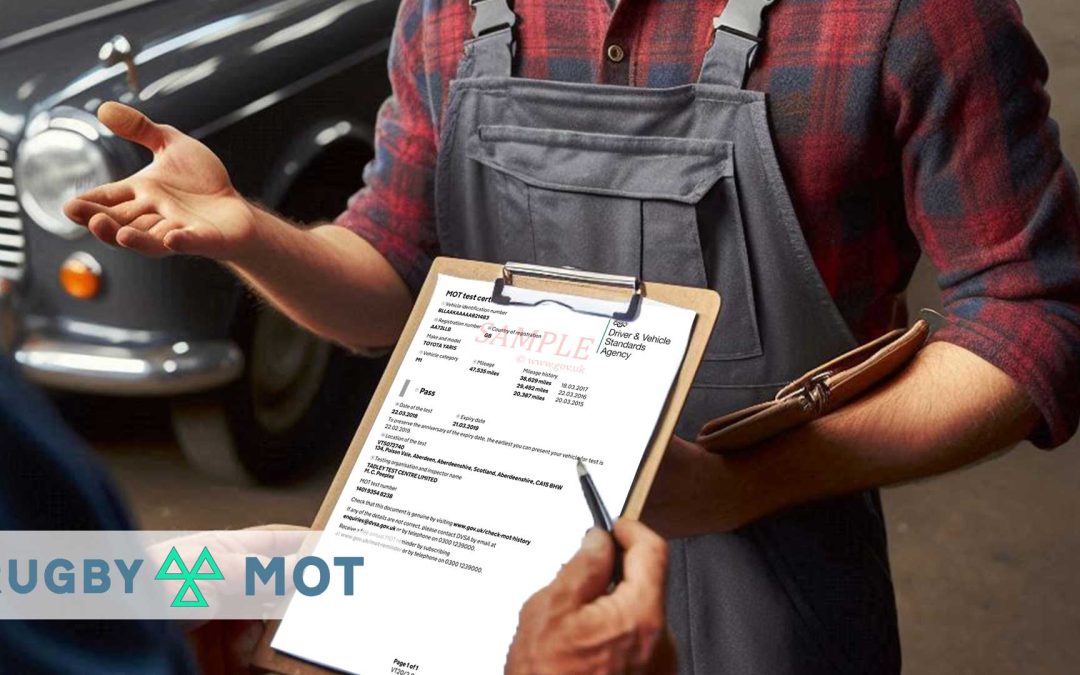### How to Read and Understand Your MOT Certificate in the UK
Passing your MOT test in the UK is a significant event for any car owner. Understanding your MOT certificate is crucial. This document proves your car’s roadworthiness at the time of the test. Here’s a comprehensive guide on how to read your MOT certificate and what to look out for.
1. **Check Your Car’s Details**:
Start by ensuring the make, model, and registration number of your car are correct. Any discrepancies here should be addressed immediately. The certificate’s accuracy is vital for legal and insurance purposes.
2. **Verify the Expiry Date**:
The MOT certificate will clearly state the expiry date. This date indicates when your next MOT is due. Mark this date on your calendar to avoid any lapses. Driving without a valid MOT can lead to fines and points on your license.
3. **MOT Test Number**:
Every MOT certificate has a unique test number. This number is essential for future reference. You will need it to check the MOT history of your vehicle online. Keep this number safe as it helps in verifying the authenticity of the certificate.
4. **Odometer Reading**:
The certificate includes the mileage recorded at the time of the test. Compare this reading with your car’s odometer. This check ensures there are no recording errors. Consistent mileage readings are crucial for maintaining the car’s value and history.
5. **Test Result**:
The most important part of the certificate is the test result. Ensure it says “PASS“. A pass indicates your vehicle met the required safety and environmental standards. If the result is anything other than pass, consult with your mechanic immediately.

6. **Advisory Notices**:
Pay close attention to any advisory notices. These notes highlight issues that might need future attention. They are not immediate failures but suggest areas that could become problematic. Address these advisories promptly to maintain your vehicle’s condition.
7. **Major Defects**:
If your car passed, there should be no major defects listed. Major defects indicate serious problems that require immediate repair. Even with a pass, it’s wise to fix these defects as soon as possible.
8. **Tester’s Signature**:
The certificate should include the signature of the authorized tester. This signature validates the certificate’s authenticity. If the signature is missing, the certificate might not be legitimate.
9. **Testing Station Details**:
The details of the testing station will be on the certificate. This includes the station’s name, address, and contact information. Knowing where the test was conducted is useful for any follow-up queries or complaints.
10. **Certificate Authenticity**:
Check for the official DVSA logo on the certificate. This logo ensures the certificate’s authenticity. Fake certificates are illegal and can result in severe penalties.
11. **Online Verification**:
You can verify the MOT certificate online using the test number. Visit the DVSA website for this verification. This step ensures the details on your certificate match the official records.
12. **Keep a Copy**:
Always keep a copy of your MOT certificate. Store it in a safe place, separate from your car. You will need it for tax renewals and insurance purposes. Digital copies are also useful in case the physical one gets lost.
13. **Plan for Maintenance**:
Use the advisory notes to plan any necessary maintenance. Addressing these issues early can prevent major problems. Regular maintenance keeps your car in top condition and ensures safety.
14. **Understand the Importance**:
An MOT certificate confirms your car’s roadworthiness at the time of the test. However, it does not guarantee the mechanical condition for the entire year. Regular checks and servicing are essential.
15. **Check Annually**:
Remember, an MOT is required annually for cars over three years old. Schedule your next test well in advance. Missing the MOT date can result in fines and invalid insurance.
16. **Service Regularly**:
Regular servicing is crucial between MOTs. A well-maintained car is less likely to fail the next MOT. It also helps in catching potential issues early.
17. **Be Proactive**:
Address minor issues promptly. Small problems can escalate if ignored. Keeping your car in good repair ensures it stays safe and reliable.
18. **Use the MOT History**:
Review your car’s MOT history for recurring issues. This history can be checked online using the test number. Identifying patterns in defects can help in long-term maintenance planning.
19. **Stay Informed**:
Keep yourself updated on any changes in MOT regulations. Regulatory changes can affect your vehicle’s compliance. Being informed ensures you stay within legal requirements.
20. **Environmental Considerations**:
The MOT test includes checks for emissions. Keeping your car’s emissions within limits is crucial for environmental reasons. Regular servicing helps maintain efficient engine performance and lower emissions.
21. **Safety Features**:
The MOT test checks critical safety features. This includes brakes, lights, and tires. Ensuring these components are in good condition is vital for your safety and others on the road.
22. **Documentation**:
Keep all documentation related to your car’s maintenance and MOT tests. This documentation helps in maintaining a clear record of your vehicle’s condition. It also aids in the resale value of your car.
23. **Insurance Implications**:
A valid MOT certificate is required for car insurance. Ensure your MOT is up-to-date to avoid invalidating your insurance policy. Notify your insurer immediately if there are any issues with your MOT.
24. **Legal Obligations**:
Driving without a valid MOT is illegal. It can result in fines, points on your license, and legal action. Always ensure your MOT is current and valid.
25. **Professional Inspections**:
If you are unsure about any aspect of your MOT certificate, consult a professional. Mechanics and MOT testers can provide clarity on any doubts. Professional advice ensures your car remains compliant and safe.
26. **Consumer Rights**:
Understand your rights if your car fails the MOT. You have the right to appeal if you believe the test was unfair. The DVSA provides guidelines on how to proceed with an appeal.
27. **Emergency Repairs**:
If your car fails the MOT and requires immediate repairs, prioritize safety. Some issues can make your car unsafe to drive. Address these repairs promptly to avoid accidents and further damage.
28. **Cost Management**:
Plan your finances for potential repairs indicated by the MOT. Unexpected repairs can be costly. Setting aside a maintenance budget helps manage these expenses.
29. **Future Planning**:
Use the information from your MOT to plan for future car needs. This includes potential upgrades or replacements. Keeping your car well-maintained prolongs its lifespan and performance.
30. **Community Resources**:
Engage with local community resources for MOT-related advice. Many local garages offer free pre-MOT checks. This can help identify and fix issues before the actual test.
Conclusion
In conclusion, understanding your MOT certificate is essential for every car owner in the UK. It ensures your vehicle remains safe, legal, and roadworthy. Regular maintenance and being proactive about repairs help avoid future issues. Keep your documentation organized and stay informed about regulations. By doing so, you ensure a smooth and worry-free driving experience throughout the year.


